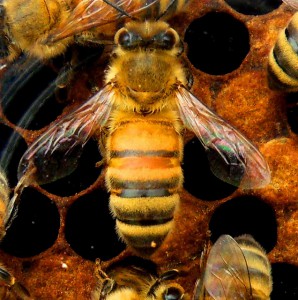More evidence of how pesticides harm bees
A study out of Penn State and the University of Florida this year showed that pesticides may be killing honeybee larvae within their hives. The PLOS publication focused on four common pesticides—fluvalinate, coumaphos, chlorothalonil and chlorpyrifos. Researchers found that exposure to some pesticide cocktails combining these chemicals have a synergistic effect on bee larvae, and are more toxic than one would expect from individual pesticide exposure levels. The study also found that even inactive ingredients in pesticides, such as the inert additive NMP, can be highly toxic to honeybee larvae. The authors previously found that forager bees bring back an average of six different pesticides to their hives from the pollen that they collect. This pollen can be fed to the larvae, killing the bees before they have a chance to mature. "We found that four of the pesticides most commonly found in beehives kill bee larvae," said Jim Frazier, professor of entomology at Penn State. "We also found that the negative effects of these pesticides are sometimes greater when the pesticides occur in combinations within the hive. Since pesticide safety is judged almost entirely on adult honeybee sensitivity to individual pesticides and also does not consider mixtures of pesticides, the risk assessment process that the Environmental Protection Agency uses should be changed,” said Jim Frazier, one of the authors of the study.




